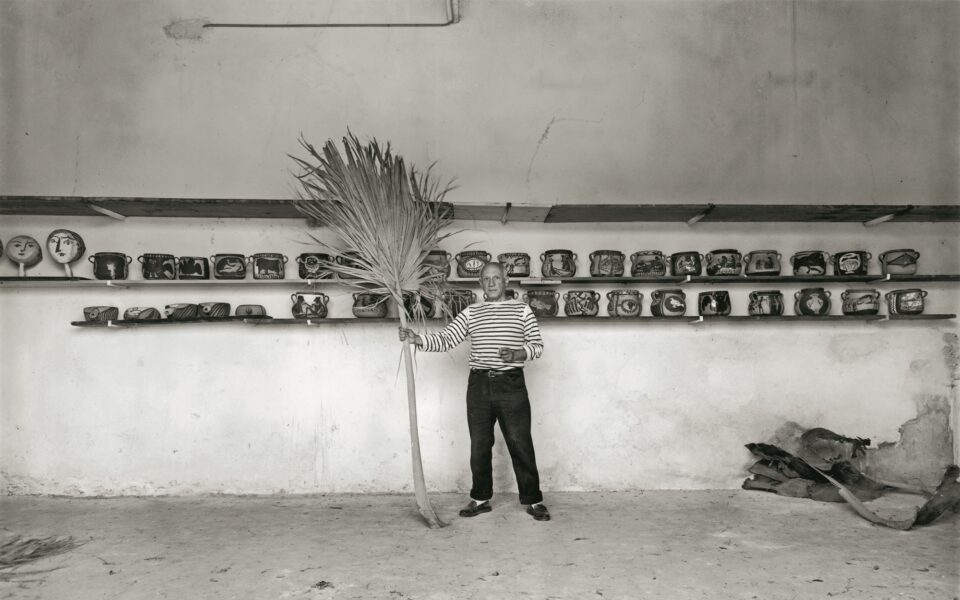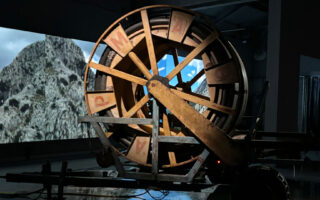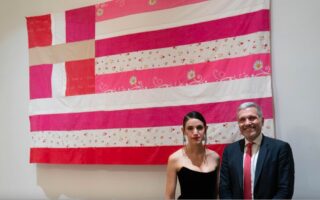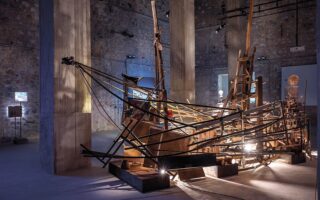The transmuted Greek inspiration of Pablo Picasso
Delphi exhibition to feature posters and ceramics by the 20th century’s foremost visual artist, drawing on classical, mythological motifs

“If all the paths I’ve traveled were marked on a map and connected with a line, it might resemble a Minotaur,” Pablo Picasso once said.
The legendary Spaniard from Malaga, a brilliant and versatile artist, never physically journeyed to Greece despite his extensive travels across Europe. Nonetheless, his profound engagement with Greek history and culture is unmistakable in his oeuvre, evident in his depictions inspired by 5th century BC painters like Apollodorus and Zeuxis, the plasticity of Archaic sculptures and 4th century BC sculptor Praxiteles. Greek mythology, too, left an indelible mark on his work, with bull-leaping emerging as a recurring motif in the repertoire of a painter hailed among the vanguard of modernism.
“The Minotaur, centaurs and fauns inhabit Picasso’s artistic landscape. Through the lens of metamorphosis, these forms radiate the vitality of life and the light of the Mediterranean,” says art theorist and critic Takis Mavrotas, curator of “Pablo Picasso: The Brilliant Champion of Art and Democracy Through Rare Posters and Ceramics,” set to open on May 11 at the European Cultural Center of Delphi (ECCD).
The exhibition will feature 55 rare posters crafted by Picasso, employing techniques like lithography, etching and linocutting. Several of these posters bear Picasso’s signature. They are all drawn from the world-famous collection of Werner Roethlisberger, a passionate art lover renowned worldwide for his trove of original Picasso posters. A portion of Roethlisberger’s collection will be showcased for the first time in Greece at Delphi.
“These posters illuminate Picasso’s ability to transmute inspiration into tangible form and emotion with a mere stroke,” observes Mavrotas. “Their defining characteristic lies in the seamless fusion of image and message, while Picasso’s exuberant character ensured a constant stream of fresh works, devoid of repetition.”
The Mougins bakery
The posters were crafted with the assistance of experienced lithographer Fernand Mourlot, printer Hidalgo Arnera and printmakers Aldo and Piero Crommelynck. These collaborators relocated to Mougins, a small village near Cannes where Picasso resided at the time, transforming an old bakery into a studio. It was here that they produced engravings and original posters, including many featured in this exhibition.
Among the valuable pieces from the Roethlisberger collection, two rare posters stand out: “Un demi-siecle de livres illustres” from 1956, a lithograph from which 700 copies were made, with 100 bearing Picasso’s signature; and “Dans l’argile de Picasso” from 1957, a lithograph with 52 copies, 10 of which bear his signature.
‘The Minotaur, centaurs and fauns inhabit Picasso’s artistic landscape. Through the lens of metamorphosis, these forms radiate the vitality of life’
Inquiring about Picasso’s artistic indebtedness to ancient Greece, we turn to Mavrotas. “Indeed,” he confirms, “for the Exposition Vallauris 1952, Picasso created a poster showcasing the bold red profile of a goat. Similarly, for the Exposition Vallauris 1960, he depicted an owl, the nocturnal bird of prey renowned for its penetrating gaze, symbolizing the wisdom of the goddess Athena. This motif, embodying the enigmatic allure of the night, served as inspiration for numerous works. Picasso’s artistry, characterized by its simplicity and familiarity, resonates with the authentic elegance of ancient Greek aesthetics,” he remarks.
In addition to the posters, 20 representative ceramic works by Picasso will grace the exhibition in Delphi, including a striking vase depicting a determined bullfighter facing down an enraged bull, watched by spectators amid the tension of life and death.
In Vallauris, the renowned pottery town, Picasso, removed from the adoring crowds, remained fervently committed to his artistic pursuits. Within the Madoura Pottery studio of Suzanne and Georges Ramie, he toiled ceaselessly with clay, fashioning plates, cups, pitchers and various objects for local summer exhibitions. Spanning from 1947 to 1971, his ceramic output amounted to over 3,500 pieces, with more than 600 reproduced in series ranging from 25 to 500 items each. “These ceramics bear witness to his reverence for the humble substance of clay and his artistic ingenuity. They represent a multifaceted artistry born from the malleable clay and the alchemy of fire, which imposes its own laws of transformation, turning it into enduring material,” says Mavrotas.

While Picasso received widespread acclaim internationally, his work also garnered significant admiration from Greek artists. Notably, Nikos Hadjikyriakos-Ghikas (also known as Nikos Ghika) cherished an embossed ceramic plate by Picasso featuring a dominant horseman figure, a gift to set and costume designer Dionysis Fotopoulos. This plate, alongside other significant loans, is showcased in the exhibition, as are four impressive plates acquired by painter Alekos Fassianos in Paris.
We ask the curator about the connection between Picasso’s original posters and his ceramics.
“Both mediums hold equal value in terms of their expressive power,” he responds. “Central to both are depictions of the human form, rendered with Picasso’s instinctive style – disruptive, at times playful, at times critical, but always devoid of academic restraint. His ceramics and posters unveil an imaginative realm that directly echoes his painterly vision, offering a vivid testament to his poetic exploration of art and life, love and mortality. Picasso’s primary interest lay in capturing spontaneous emotions. Moreover, both ceramics and engraving played pivotal roles in disseminating his artistic legacy, imparting universality to his oeuvre.”
Fighting obscurantism
What message does Mavrotas believe emerges from this exhibition?
“Picasso, alternately as a harlequin or a bullfighter, waged a battle against violence and obscurantism, championing freedom and human ideals through his art. A trailblazer of the major aesthetic revolutions of the 20th century, he delved into myths and history with profound insight, exploring the boundaries of humanity and the universe. His relentless pursuit was the creation of an aesthetic reality, infused with novel plastic elements and semantic correlation. Through his work, he illuminated the essence of the dream world, the realm that anchors life itself and emanates an unceasing vitality. With his art, he defended the freedom of love, unconventional lifestyles and the liberation of thought,” he says.

The exhibition holds significant artistic and educational value, continuing the artistic program of the ECCD, which has previously hosted notable exhibitions featuring artists such as Takis, Chryssa, Alekos Fassianos and Costas Tsoclis, as well as thematic exhibitions like “Columns and Pillars,” “Apollo’s Heritage” and “Clay and Plastic Art Creation.” Accompanied by a comprehensive catalogue showcasing all the exhibited artworks, accompanied by theoretical analysis by the president of the ECCD governing board, Harvard professor Panagiotis Roilos, and Mavrotas, the exhibition highlights Picasso’s immense contribution to engraving and ceramics.
Moreover, guided tours will be offered throughout the exhibition, supported by QR code tagging, necessitating the use of smartphones with headphones.
On Sunday, May 12, at 10.30 a.m., a roundtable discussion titled “Pablo Picasso, the Great Innovator of 20th Century Art” will be held. The exhibition will run until June 10.





